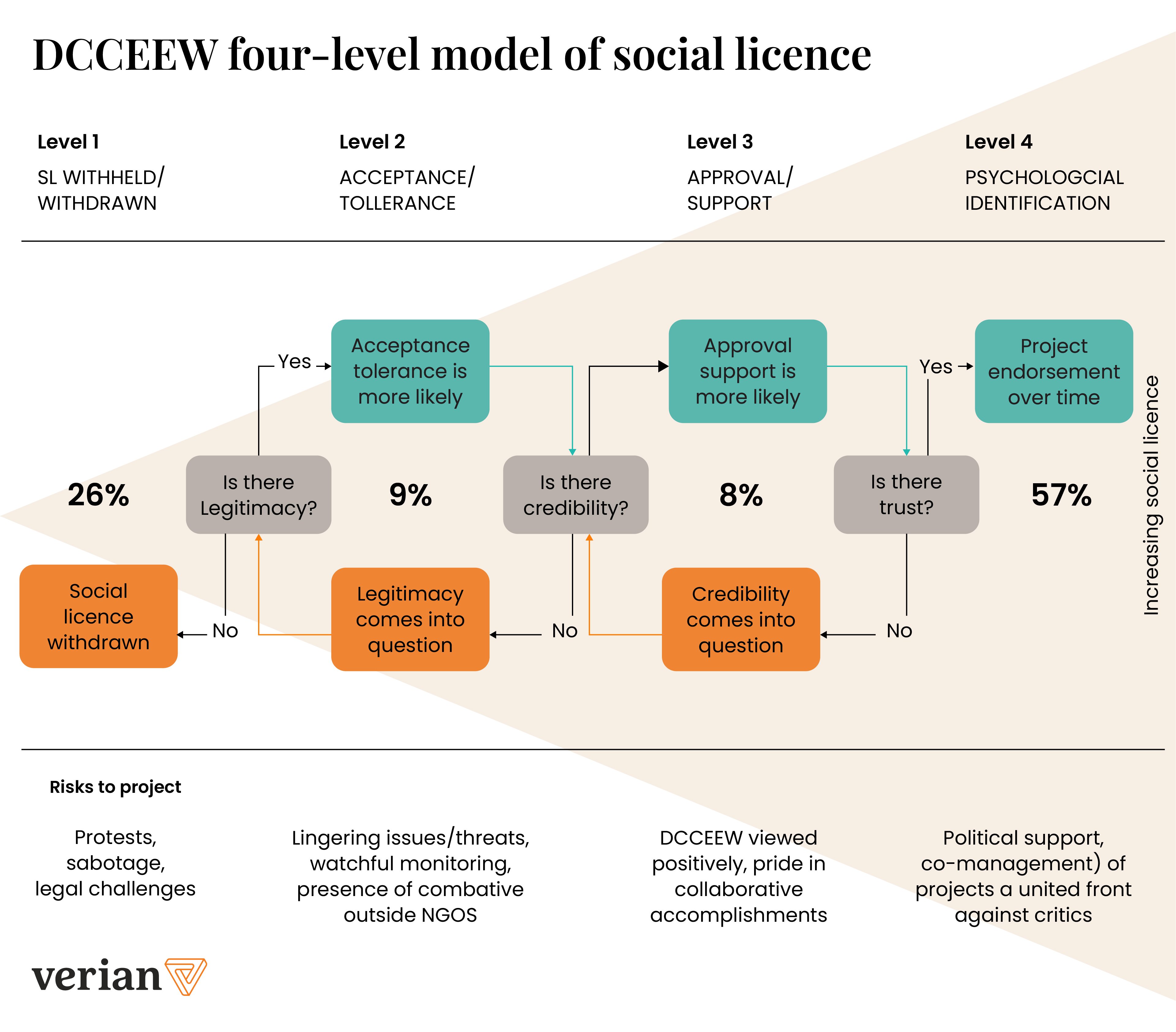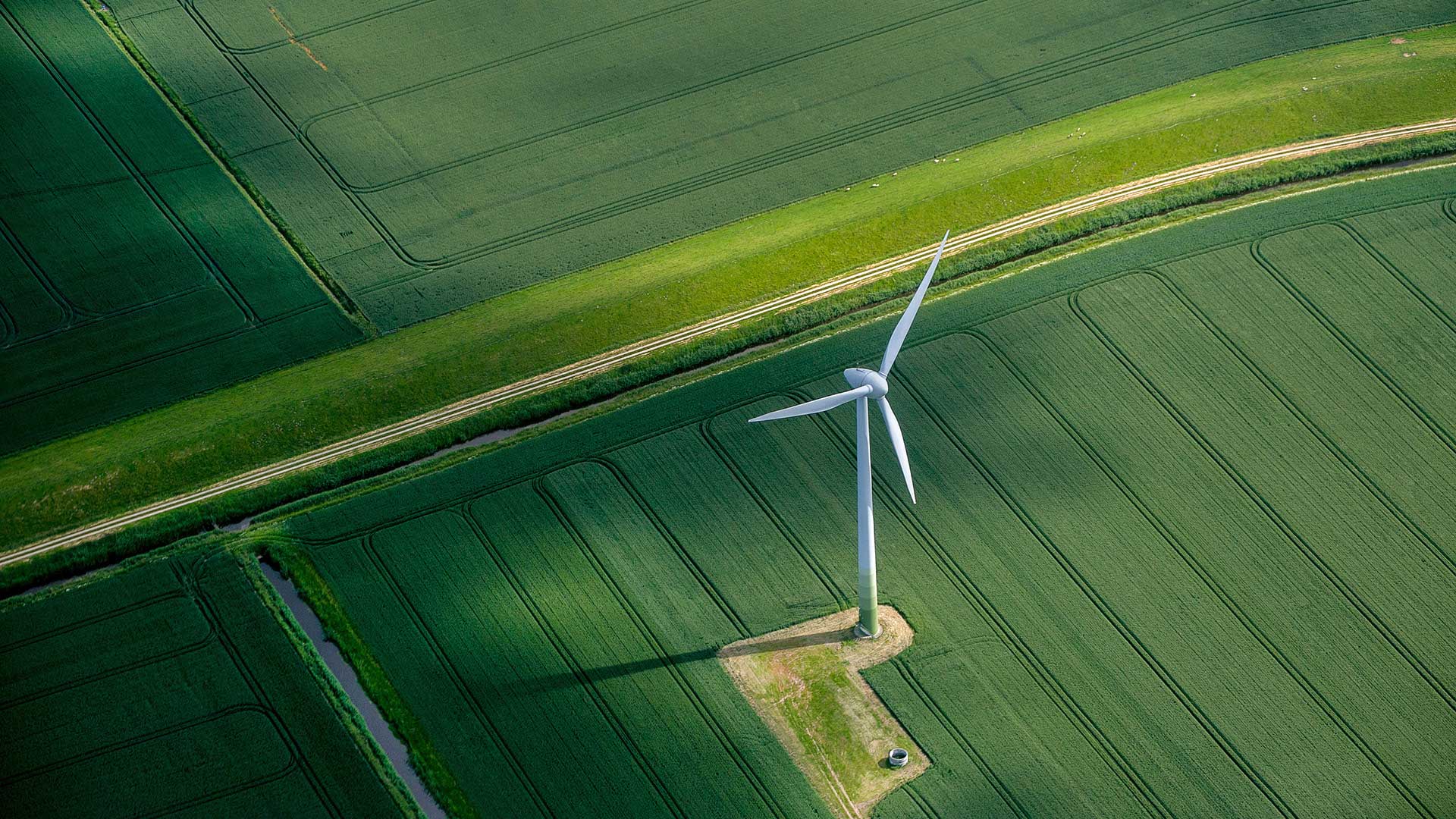In today’s policy and regulatory landscape government agencies must demonstrate that their actions align with community values and expectations, alongside basic service delivery. The concept of “social licence” has become essential for public sector organisations seeking to build and maintain this trust, yet measuring it in a meaningful, actionable way has often been either elusive or fraught with complexity. It is also clear that existing attempts at measuring social licence have not considered the unique nature of the public sector and its stakeholder environment.
To meet this challenge, Verian developed the Social Licence Model: a purpose-built, evidence-based tool designed for governments and government agencies. This product enables public sector organisations to systematically measure the strength of their social licence to operate, and their social licence to act in undertaking specific initiatives.
This case study highlights how the Social Licence Model was applied to the Department of Climate Change, Energy, the Environment and Water (DCCEEW) and its policies to reduce carbon emissions in Australia. It has a particular focus on one of its flagship policies, The Safeguard Mechanism.
Background:
The Department of Climate Change, Energy, the Environment and Water (DCCEEW) is an Australian government agency responsible for developing and implementing policies and programs related to climate change, energy supply, environmental protection, and water resource management. Their responsibilities involve working towards a sustainable future for Australia by addressing climate action, ensuring reliable energy, and conserving natural heritage.
DCCEEW has created a flagship policy to reduce Australia's carbon emissions by targeting the largest greenhouse gas emitters and set annual limits for emissions. This is called the Safeguard Mechanism. This policy sets annual greenhouse gas emissions limits on Australia's largest emitters, to gradually reduce emissions, to ensure that Australia meets its emissions reduction targets. Facilities must either reduce their emissions, purchase carbon credits to offset them, or face penalties for exceeding targets.
This research had two objectives:
- to establish whether DCCEEW has a social licence to deliver its mandate of reducing Australia’s carbon emissions (a social licence to operate).
- to establish whether the community deemed them to have a social licence to execute the safeguard mechanism (a social licence to act).
Approach
While a social licence can be determined both quantitatively and qualitatively, this project looked to measure it quantitatively. It used a nationally representative sample of n=1000 members of the general population and an online survey with an average completion time of approximately 10 mins.
One objective of the survey was to capture an unprompted measure of community literacy about DCCEEW, its mandate and the safeguard mechanism. It then explored the extent to which the community perceived DCCEEW as having the permission to fulfill its mandate.
It also investigated whether the public saw reducing Australia’s carbon emissions as a worthwhile undertaking and a legitimate problem that needs solving. Finally, it measured whether the community felt that the safeguard mechanism is a credible solution and whether DCCEEW can be trusted to execute that solution in a way that represents the best interests of the community.
Impact
Organisational Literacy low
Overall knowledge about DCCEEW was low. Only 40% of the population having heard of DCCEEW and only 25% able to say they have at least some idea of what DCCEEW is responsible for. Only 16% could confidently describe what DCCEEW does. This was, important as low understanding of DCCEEW and its mandate may make it harder to secure community support. It also suggested that public support or opposition could be based on surface-level assumptions, rather than an informed understanding of its role and actions. As a result, DCCEEW’s ability to actively shape and control its own narrative was potentially weakened.Issue literacy higher (but not high)
Around two thirds of the population indicated that they had at least some knowledge about climate change, energy and the environment. Around half could explain why reducing Australia’s carbon emissions is important or could describe the benefits of doing so. While most professed to have at least a little knowledge about reducing carbon emissions, only a small minority felt they had good or expert level knowledge.
This suggested that the public was receptive to these issues, even if their knowledge was not deep. While low organisational literacy was a barrier to building a social licence, moderate issue literacy presented an opportunity. DCCEEW’s path to building its social licence lay in raising awareness of its role and connecting its work to issues the public already cared about.

Social licence to operate: overall index score of 63.3 out of 100
Following the assessment of organisational and issue literacy, respondents were provided with neutral and factual information about DCCEEW’s role and mandate to allow those with no knowledge to make a more informed assessment of its social licence to operate. Most respondents agreed that DCCEEW’s work aligned with community values, is ethical and fair, and delivers positive outcomes. The majority also felt the agency was well-run and trustworthy. While this was a positive outcome overall, it is still likely that for many, such perceptions are shaped by surface level knowledge rather than a deep understanding of the organisation.
Operating in an environment where public knowledge is low, but support is generally high is not necessarily a negative situation. However, it does create vulnerability to rapid shifts in public sentiment or support and a limited ability to anticipate or shape the narrative in response.
Some respondent’s impressions were based off their general attitudes towards government or public institutions, rather than a critical assessment of the agency itself. For example, when faced with the complex task of evaluating DCCEEW, some people default to a simpler task by answering the question: “How do I feel about the government and its performance in this area?” Often this means that support or opposition can be shaped by broad sentiment rather than a specific, informed evaluation of the agency’s work.
Social licence to act: overall index score of 68.0 out of 100
To ensure respondents could provide informed answers about the Safeguard Mechanism, they were given neutral information explaining what it is and how it works. Most agreed that reducing Australia’s carbon emissions is necessary, urgent, and worth the investment, indicating broad recognition of the issue’s legitimacy. The majority also viewed setting annual emissions targets as a credible and sensible solution and expressed that they trust DCCEEW to act fairly and in the community’s best interests when managing these targets.
These findings suggested strong public endorsement for both the need to address carbon emissions and the policy mechanisms chosen to do so. By providing neutral information, the assessment moved beyond surface-level sentiment, capturing more considered support for DCCEEW’s role and actions. However, because public literacy about the Safeguard Mechanism and DCCEEW’s mandate remain limited, this support was still vulnerable to rapid shifts in sentiment or misunderstanding. The agency’s ability to sustain its social licence ongoing will depend on transparent decision-making and continued efforts to build public understanding.
Social licence is not uniform across society
Using Verian’s Four Step Logic Model we found that:
- Around one quarter of population (26%) were not willing to grant a social licence to DCCEEW to enact the safeguard mechanism (level 1). This was due to them not believing that there was a legitimate need to reduce Australia’s carbon emissions.
- A further 9% believed there was legitimate need but did not see the safeguard mechanism as a credible solution (level 2).
- A further 8% believed in the need to reduce carbon emissions and felt the safeguard mechanism was a credible solution but did not trust DCCEEW to act fairly and in the best interests of the community (level 3).
- And finally, more than half (57%) granted DCCEW a social licence to enact the Safeguard Mechanism (Level 4). They saw reducing carbon emissions as a legitimate concern, they believed the safeguard mechanism is a credible solution and trusted DCCEW to act in the best interests of the community.

These results show that social licence is not uniform across the community. While a majority are supportive, a notable minority are not. This means DCCEEW cannot assume broad, uncontested support for the safeguard mechanism. Instead, the agency’s social licence is layered: some people question the legitimacy of the problem, others doubt the credibility of the solution, and some lack trust in DCCEEW itself. DCCEEW should look to better understand these each and what is needed to reassure them about their specific concerns.
Conclusion
This case study demonstrates the critical importance of understanding and actively managing social licence in the public sector. By applying the Social Licence Model to DCCEEW and its flagship Safeguard Mechanism policy, we revealed both strengths and vulnerabilities in public perceptions. While there is broad support for DCCEEW’s mandate and approach, low organisational literacy means this support is not deeply rooted and remains susceptible to rapid change. The findings highlight the need for ongoing, transparent communication and engagement to build deeper public understanding and resilience. The Social Licence Model provides government agencies with a robust, actionable framework to measure, protect, and strengthen their social licence; ensuring they can deliver on their mission with the confidence and trust of the communities they serve.
Latest insights

13 Nov 2025

15 Oct 2025
Our latest thinking
Subscribe to receive regular updates on our latest thinking and research across the public policy agenda.
Our expert teams around the world regularly produce research and insights relating to public policy issues.
If you are interested, please provide your details. You can unsubscribe at any time.





